Definitions
- Diagenesis: the biological and physiochemical alteration of organic matter and minerals which occurs in sediments after deposition, but prior to significant changes caused by heat
- Catagenesis: the thermal alteration of organic matter by burial and heating in the range of about 50 to 150 ° C, requiring millions of years
Biomarkers as maturity indicators
One of the most widely used applications for biomarkers is for the measurement of thermal maturity of organic matter to estimate the temperature history of sedimentary basins. A large number of biomarker parameters that are sensitive to different stages of maturity have been developed. It is important to note that the thermal evolution of biomarkers and organic matter in general might be widely different for rocks of different lithological compositions and from different basins and formations. Therefore, caution must be used when comparing maturity parameters across disparate sample sets.
A typical example of a biomarker maturity parameter is the ratio of 20S/(20R + 20S) isomers in a sterane, which measures the relative abundance of the S and R configurations at the 20 carbon position of sterane hydrocarbons, with 5alpha, 14alpha, 17alpha(H) stereochemistry. Living organisms possess sterols exclusively with the 20R configuration, but during diagenesis and catagenesis, steranes are gradually transformed to a mixture of 20R and 20S isomers, until they reach an equilibrium value of ~0.55 for the 20S / (20R + 20S). Thus, before that equilibrium is reached, the higher that ratio, the more mature the rock.
The endurance of biomarkers over time
Hydrocarbon biomarkers have endured in sedimentary rocks with little alteration for as long as 1.7 billion years. Time alone, however, is not the driver of degradation of organic molecules. Instead, the main factor driving molecular degradation, next to oxidation and erosion of the host rock, is thermal cleavage of covalent bonds during metamorphism. We are currently studying sedimentary successions as old as 2.7 billion years old in Australia and South Africa. We are finding that hydrocarbon biomarkers can be preserved under much harsher conditions than previously thought. There are several initiatives under way that seek to explore this further. The NASA Astrobiology Institute focus group Mission to Early Earth, has drilled a new well in the Pilbara Craton of Australia to retrieve pristine cores from rocks between 2.5 and 2.7 years old. The Agouron Institute has funded a drilling program in South Africa that has also retrieved excellent new core material for a range of biogeochemical analyses.


